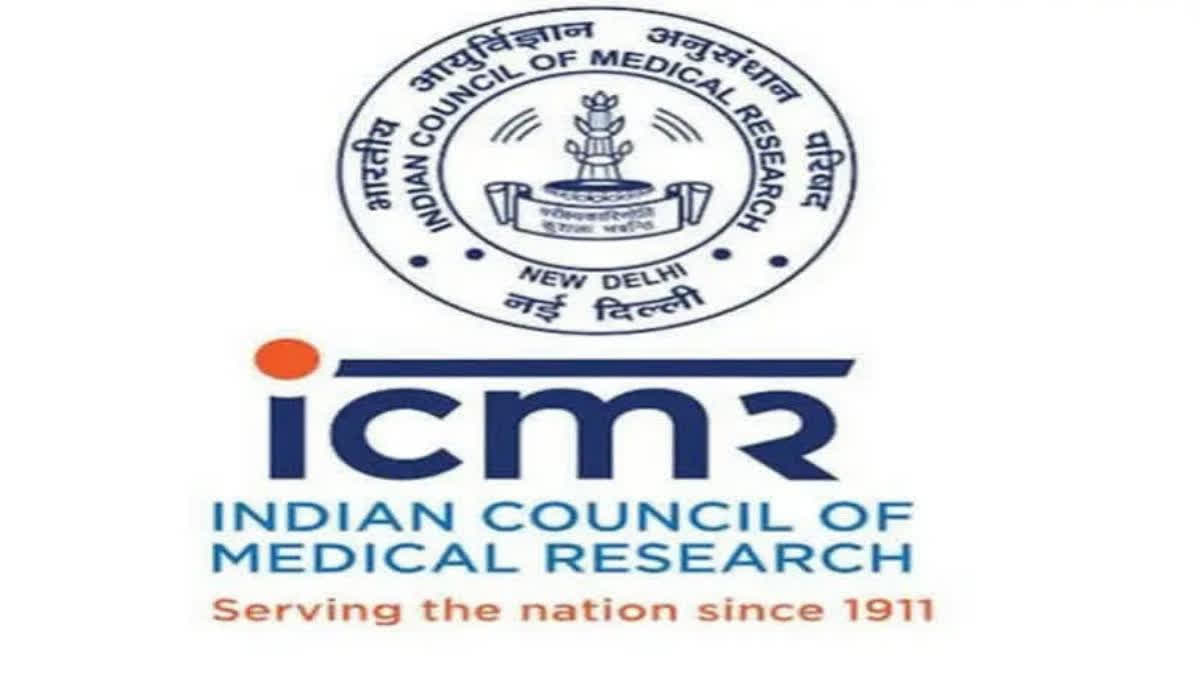New Delhi: Director General of the Indian Council of Medical Research (ICMR) Dr Rajiv Bahl on Monday stressed the importance of implementing evidence-based stroke care to mitigate disability and prevent new strokes. Dr. Bahl gave this statement following the publication of a report in the Lancet Neurology journal saying stroke, a highly preventable and treatable condition, could lead to nearly 10 million deaths annually by 2050, primarily affecting low and middle-income countries (LMICs).
According to the report, hypertension, diabetes, unhealthy diet, low physical activity, alcohol intake, smoking, air pollution, and cold weather are the major factors for strokes. “ICMR is actively engaged in crafting country-specific ambulatory care models at the primary care level to combat non-communicable diseases. The Government of India is committed towards formulating evidence-based policies and their implementation through the National Programme for Prevention & Control of Non-Communicable Diseases (NP-NCD),” Dr Bahl said.
He said that a notable success is the India Hypertension Control Initiative (IHCI), which employed tech-driven innovations to digitally monitor over two million patients, achieving real-time blood pressure control in 50 percent of cases. The IHCI bagged the 2022 UN Inter-Agency Task Force and WHO Special Program on Primary Health Care Award.
The Lancet projection comes from the collaborative effort of the World Stroke Organization and the Lancet Neurology Commission under which four studies have been published. The report underscores that stroke deaths are expected to surge from 6.6 million in 2020 to a daunting 9.7 million by 2050. By 2050, it is estimated that the contribution of stroke deaths in LMICs will see an increase from 86 percent to 91 percent. The report emphasized the critical role of evidence-based, pragmatic solutions in combating this looming crisis. Implementing and rigorously monitoring the commission's recommendations, which are firmly grounded in evidence, could lead to a significant reduction in the global stroke burden, effectively countering this ominous projection.
Dr Meenakshi Sharma, Scientist-G at the NCD division of ICMR, highlighted the development of stroke care models in India and stressed the importance of screening and treating high blood pressure, which is being achieved through the India Hypertension Control Initiative. Canada-based neurologist and Stroke Fellow in Calgary, Dr Ivy Sebastian, also underscored the diversities and commonalities in healthcare systems, calling for timely interventions such as intravenous thrombolysis, thrombectomy, and stroke unit care delivered through stroke-ready centers.
Among the Southeast Asian region (SEAR) countries, hospital-based stroke registries have reported data from India, Indonesia, Sri Lanka and Thailand.
Also read: Nipah outbreak limited to Kozhikode district of Kerala only, says ICMR DG
“We did not come across such data from the other SEAR countries in the last 25 years. These registries have provided valuable information on the average age of the patients, female and male distribution, presence of risk factors, types of strokes, and the aetiological subtypes of ischemic stroke among the admitted patients,” the study said.
The Hyderabad stroke registry in India and data from Thailand showed that ischemic stroke was the most common stroke type, accounting for close to 80 percent of total stroke cases. Hemorrhagic strokes accounted for the remaining 20 percent. “In the Hyderabad stroke registry, large-artery atherosclerosis was the commonest etiology for ischemic stroke, and in this group of patients, intracranial atherosclerosis was the commonest mechanism. In the largest prospective ischemic stroke registry from India, large-artery atherosclerosis and cardioembolic strokes constituted 29.9 and 24.9 percent of all ischaemic strokes, respectively,” the study highlighted.
Hospital-based data from Thailand showed a different finding, as lacunar strokes were the most common subtype of ischemic stroke in this country. In the SEAR countries currently, the tenth or the eleventh versions of the International Classification of Diseases (ICD-10 or 11) system are not routinely used to log stroke diagnoses for discharge or billing, and that limits the ability in these countries to use such hospital-based data for stroke surveillance, it said.
Even though acute stroke care services have steadily improved in SEAR, they remain inadequate, with disparities in availability and consistency. According to the study, access to, and utilisation of evidence-based acute stroke treatment regimens such as thrombolysis is still low. “Dismal rates of Intravenous thrombolysis (IVT) ready centers from 0.5 to 3.6 percent have been reported by various region-specific studies from India,” the findings said.
“Lack of public awareness, inadequate stroke-ready centers, delays in arrival at the hospital, and high medication costs are some of the key contributory factors resulting in low utilization of IVT in this region. Refusal to consent (10.7 percent) and unaffordability (9.8 percent) were reported in a study from Northwest India.
The study has found striking disparities in the availability of neurologists in Southeast Asia. “With fewer than 4500 neurologists in the entire region, most SEAR countries have an average of 1 neurologist per 1 million population. Bhutan currently has no neurologists in the region. Therefore, many of these countries rely on physicians to manage stroke, often leading to delays in diagnosis and referral to stroke-ready centers. Lack of easy and timely access to neuroimaging further challenges managing acute stroke. In Sri Lanka, despite the availability of IVT in 97 percent of tertiary hospitals, the use is limited by the provision of neuroimaging in only 59 percent of centers,” the findings stated. Although the number of stroke units (SUs) in this region has increased, the number of units equipped to provide acute care is still limited.




